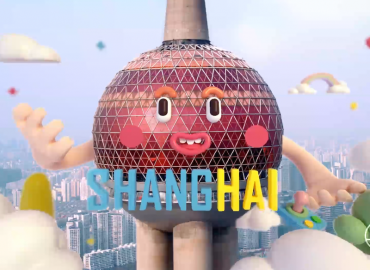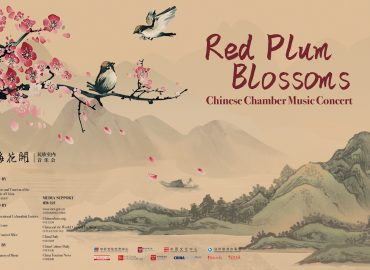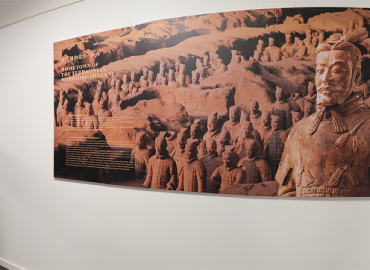The program presents eleven short animated videos with Chinese New Year as the theme. It draws inspiration from Spring Festival culture, traditional customs, and the Twelve Zodiac Animals culture and combines them with traditional Chinese operas and the Winter Olympics elements. The videos express good wishes for family reunions, harmony, and health. All these videos are created by young animators from the National Academy of Chinese Theatre Arts.
//DANISH
Programmet præsenterer elleve korte animerede videoer med kinesisk nytår som tema. Den henter inspiration fra forårsfestivalskulturen, traditionelle skikke og de tolv kinesiske stjernetegn og kombinerer dem med elementer fra traditionelle kinesiske operaer og vinter-OL. Videoerne udtrykker gode ønsker om familiesammenføring, harmoni og sundhed. Alle disse videoer er lavet af unge animatorer fra National Academy of Chinese Theatre Arts.
Beijing Thirteen Popular Ice Snow Games
Beijing Thirteen Popular Ice Snow Games refer to various traditional ice and snow activities popular on Shichahai Lake in old Beijing, including tug of war on ice, making a snowman, ice skating near Yinding Bridge, ice dragon boat, ice slide, spinning top on ice, slipping game, snowball rolling, ice sleigh, ice bowling, ice golf, ice football, and ice skating play. The short video depicts the scenes of two kids experiencing the Beijing Thirteen Popular Ice Snow Games with their friends during an ice and snow carnival on icy Shichahai Lake.
Twelve Zodiac Animals Celebrate Spring Festival (Ink Painting Version)
The Twelve Zodiac Animals, namely the Rat, Ox, Tiger, Rabbit, Dragon, Snake, Horse, Ram, Monkey, Rooster, Dog, and Pig, are time-honored symbols of Chinese folk culture. In the form of ink painting, this short video depicts the Twelve Zodiac Animals celebrating the Spring Festival through activities like pasting Spring Festival couplet hanging lanterns, making dumplings and letting off fireworks.
Twelve Zodiac Animals Celebrate Spring Festival (Paper Cutting Version)
The Twelve Zodiac Animals, namely the Rat, Ox, Tiger, Rabbit, Dragon, Snake, Horse, Ram, Monkey, Rooster, Dog and Pig, are time-honored symbols of Chinese folk culture. In the form of paper cutting, this short video depicts the Twelve Zodiac Animals celebrating the Spring Festival through activities like pasting the character Fu (meaning happiness), cooking New Year cakes, doing shopping for the Spring Festival, receiving red packets and firing firecrackers.
Welcome the Year of the Tiger
According to traditional Chinese customs, people worship the God of Fortune on the fifth day of the first lunar month to pray for wealth and happiness in the new year. This short video features characters in the style of woodblock New Year pictures. It tells such a story: As the Spring Festival draws near, the Martial God of Fortune finds that his ride, which is a tiger, wanders away. In haste, the god searches everywhere to retrieve the tiger.
Celebrating the Year of the Tiger with Traditional Operas
In the form of shadow play, this short video combines the mythical monster Nian and the traditional lion dance culture. Wearing headgear like the ox’s head, Nian performs lively on the stage. At the end of the performance, two little tigers jump out, symbolizing good wishes to audiences from both home and abroad for the upcoming Year of the Tiger.
The Adventure of Chinese Dumpling
The work draws inspiration from the tradition of eating jiaozi (Chinese dumplings) during the Chinese New Year. In northern China, people believe that those who eat jiaozi with coins, red dates or peanuts will have good luck in the coming year. With bold imagination, the work is imbued with childlike innocence. It tells such a story: During Chinese New Year, a jiaozi containing a coin miraculously comes to life and flees from the kitchen. By accident, he runs into a performer who plays Heavenly God in the traditional Peking opera Heavenly God Brings Blessings. The jiaozi then interacts with the Heavenly God. Eventually, the Heavenly God sends blessings conveyed by the jiaozi to everyone. The work expresses good wishes for the new year and sincere greetings to people around the world.
Against the Monster Nian
In Chinese mythology, Nian is a monster that comes out to hurt people on Chinese New Year’s Eve. Later, people found that it is afraid of red color, light, and loud sounds. Thus, they managed to drive away Nian through pasting Spring Festival couplets, hanging red lanterns, and burning firecrackers, which gradually became traditional activities celebrating Chinese New Year. The work adopts a way of expression full of imagination and tells such a story: A kid buys a dough figurine depicting the Monkey King in the market. He believes the Monkey King has great magic power, and the dough figurine is lifelike. In his imagination, the kid sees the Monkey King fighting the monster Nian. As we welcome the new year and bid farewell to the old one, the work conveys the wish that everyone can overcome various difficulties and lead a happy, safe life in the coming year.
Skating
Skating is a winter sport popular in northern China. With a long history in China, it originated about 1,000 years ago in the Song Dynasty (960-1279) and became a popular sports pastime in the Qing Dynasty (1636-1912). The Qing court painting Ice Play vividly portrays a grand performance on the ice for the royal family during the Qing Dynasty. The work, in the form of stop-motion animation, tells such a story: A kid wants to skate in the park after seeing the skating movements depicted in Ice Play. He meets another kid friend on the way to the park. The two become friends because of Ice Play and eventually skate together in the park.
Shadow Play on Ice
The 24th Winter Olympic Games will take place in Beijing in 2022. Inspired by the shadow play of western Beijing, the work depicts sheng (male character), dan (female character), jing (character with a painted face), and chou (clown)—four basic types of characters in traditional Chinese operas—in the form of skaters, expressing people’s shared aspiration for the Winter Olympics and conveying good wishes for the coming year. Let us meet in 2022, together for a shared future.
Secrets Hidden in the Painting Ice Play
Ice Play is a painting depicting the grand scene of royal ice games and performances in the time of Emperor Qianlong (1736-1796) during the Qing Dynasty. In the painting, viewers can see many games like modern ice sports and find traces of China’s Peking Opera culture. This short video allows the audience to walk into the painting and explore the cultural secrets behind the scene.
The Cradle of Skiing
Many modern ice and snow sports can find their prototypes in historical records and cultural relics. A rock painting discovered in Altay, northwestern China’s Xinjiang Uygur Autonomous Region verified that skiing originated in China. This short video is based on the rock painting, and uses digital technology to revive the scene of hunters skiing more than 10,000 years ago.

1.png)



